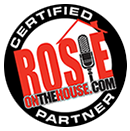By James Leitz
 For the average investor, the best investment strategy for 2013 likely won’t be the traditional investment strategy commonly recommended by the investment companies and their representatives. Change is in the wind, and one of the best ways to deal with this is to make adjustments to the asset allocation strategy in your investment portfolio.
For the average investor, the best investment strategy for 2013 likely won’t be the traditional investment strategy commonly recommended by the investment companies and their representatives. Change is in the wind, and one of the best ways to deal with this is to make adjustments to the asset allocation strategy in your investment portfolio.For over 30 years the investment industry recommended that the best investment strategy for most investors was an asset allocation of: 50% to 60% in stocks and 40% to 50% in bonds. The investment vehicle promoted was mutual funds – stock funds and bond funds. This kept things simple and actually worked quite well. Losses in one asset class were often offset by gains in the other. This investment portfolio produced both good growth and income for average investors over the years.
As 2013 unfolds it’s time to review your asset allocation. Sometimes the best investment strategy is to be a bit more conservative than the tried and true strategy of yesterday. The stock market has more than doubled in value since early 2009. Bond prices are near historical highs, with interest rates pushing all-time lows. The markets are in a state of uncertainty, as Americans in general are fed up with the lackluster economy and the Congressmen who represent them.
Having followed the markets for over 40 years, I have never seen a tougher environment to invest in. Putting together the best investment strategy has never been more difficult. All of the investment asset classes appear to be selling at high price levels, with real estate being perhaps the exception. So, let’s take a look at the things to consider in your asset allocation strategy.
If you are one of the millions of every-day Americans who are relatively heavy into bond funds, consider cutting back on your asset allocation to these funds. Bond funds are NOT safe investments in today’s low-interest-rate environment. Your best strategy: no more than 30% or 40% invested in bonds or bond funds. Even U.S.Treasury bonds (T-bonds) will lose significant value if interest rates go back up to normal levels.
Also, if you hold long-term bond funds, consider moving to intermediate-term funds that hold bonds with an average maturity of about 5 to 7 years in their investment portfolio. Bond funds that hold long term bonds, maturing in 20 years or more, can lose significant value when interest rates head upward. With this investment strategy you will receive a bit less in dividend income, but you will gain by significantly increasing the safety factor.
Millions of Americans have lost faith in the stock market, and many have sold their stocks funds to buy bond funds. The average diversified stock fund gained more than 100% between early 2009 and early 2013. If you missed this opportunity, it is not the best investment strategy to jump in big time and play catch-up now. But, depending on your risk profile and age, you should consider an asset allocation with 20% to 50% going to stock funds.
In times of high uncertainty diversification is one of the investor’s best friends. Let this thought guide your investment strategy and asset allocation when picking stock funds for 2013 and beyond. Include a variety of stock (equity) funds in your investment portfolio. The perfect place to start is with a diversified large-cap equity fund like an S&P 500 index fund. With an S&P 500 index fund you own a small piece of 500 of America’s largest, best known companies. Make this your largest holding in the stock portion of your investment portfolio.
Then, add an international equity fund to your portfolio. Also include specialty funds in your investment strategy that focus on specific sectors like real estate, gold, natural resources and basic materials. These funds have sometimes been the best investment when the stock market in general is weak.
Now that you have cut your asset allocation to stocks and bonds, where do you invest those proceeds? Cash is your other friend when uncertainty is high. Cash refers to safe, liquid investments like money market funds or money in bank savings accounts. Sometimes the best investment strategy includes keeping some powder dry awaiting future opportunity.
Your best investment strategy for 2013 is to modify your asset allocation in stocks and bonds so that risk is only moderate. Diversify broadly across the asset classes, and have cash available so you can take advantage of future investment opportunities. This strategy will keep you in the game, with less risk than yesterday’s conventional investment strategy.
Author James Leitz has 40 years of investing experience and would like to help you learn how to invest. Get up to speed on how to invest at http://www.investinformed.com.
Article Source: http://EzineArticles.com/?expert=James_Leitz


